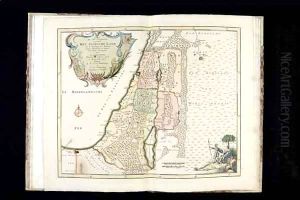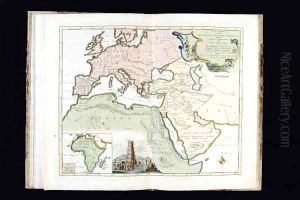Willem Albert Bachiene Paintings
Willem Albert Bachiene was a Dutch cartographer, pastor, and theologian who lived during the 18th century. Born on October 23, 1712, in Maastricht, Netherlands, Bachiene's work spanned several fields, reflecting the Enlightenment era's spirit of inquiry and scholarship.
Bachiene's interest in geography and cartography was evident early in his life, and he pursued these passions alongside his religious vocation. His theological studies did not impede his scientific endeavors; in fact, they often intersected. After completing his studies, he became a pastor in the Dutch Reformed Church and served in various congregations. His knowledge and expertise in geography led him to produce works that were significant for the understanding of the geographical landscape of the Netherlands during his time.
In addition to his role as a pastor, Bachiene was known for his contributions to cartography and geography. He published an atlas titled 'Atlas der geheele aarde' (Atlas of the Entire Earth), which was well-regarded for its detail and accuracy. This work provided comprehensive maps that were useful for educational purposes and for the general advancement of geographical knowledge. Bachiene's maps were not only valuable for their cartographic content but also for their aesthetic appeal, as they were often beautifully illustrated.
Bachiene's reputation as a scholar was further solidified by his appointment as a professor of physics and astronomy at the Illustrious School of Maastricht, where he could share his vast knowledge with students and contribute to the academic community. His lectures and teachings were based on his observations and studies of the natural world.
Over the course of his life, Bachiene's contributions to the fields of theology, cartography, and education were considerable. He was involved in the intellectual discourse of his time and made efforts to disseminate knowledge through his writings and teachings. Willem Albert Bachiene died on March 30, 1783, leaving behind a legacy as a multifaceted scholar who bridged the gap between science and religion in a time when such interdisciplinary approaches were beginning to flourish.

